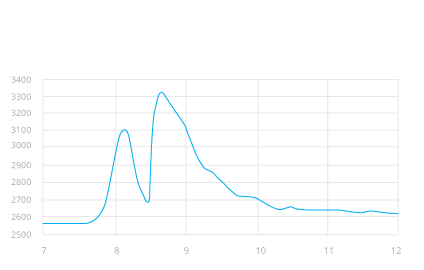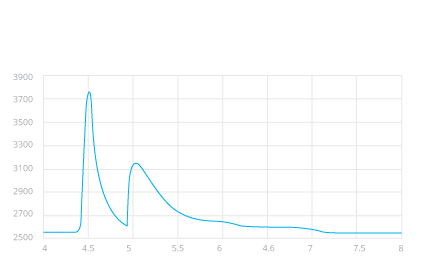Technology & Science
A New Era in Respiratory Testing
From Lab-Based to Handheld
Traditional methods for assessing lung function – such as Body Plethysmography and Nitrogen Washout – have long been the standard in respiratory diagnostics. However, they require large,
complex equipment, dedicated testing rooms, and lengthy procedures that are often uncomfortable for patients and inconvenient for clinics. While clinically effective, these systems are not always
practical for routine or widespread use

Innovative Approach to Pulmonary Diagnostics
STS replaces the need for multiple diagnostic systems with a single, compact, handheld unit.
At the core of this innovation is TechnoPulm’s
patented dynamic process technology,
Traditional lung volume measurements rely on large systems with sealed chambers and controlled environments. Understanding that the thermodynamic principles behind these systems are not suitable for portable use, we developed a completely new measurement approach. Our dynamic process technology combines custom-designed hardware with proprietary algorithms to capture accurate pulmonary data during real-time exhalation.
The technological innovation that enabled miniaturization into a handheld device is based on a novel flow diffuser, designed to achieve a rapid transition from turbulent to laminar flow, allowing highly accurate pressure measurements. This is complemented by a flow monitoring and control mechanism that utilizes an algorithmically guided mechanical shutter to create a unique airflow envelope containing two distinct pressure peaks of the exhaled air.
The unique flow profile, achieved by TechnoPulm’s technology, presents two pressure peaks occurring within the short time window of a forceful exhalation. This profile enables highly accurate measurements, as during this brief moment of exhalation, the pressure differences between the alveoli, lungs, and mouth are minimized, allowing the measured pressure to reliably represent true pulmonary and alveolar pressures.
Immediate patient condition analysis
The STS device leverages an innovative sensing method combined with an advanced AI algorithm to deliver immediate, on-screen graphical analysis of the patient’s pulmonary condition
Artificial Intelligence (AI)
- Reliable detection of any pulmonary condition
- Drug therapy efficiency
- Converting the forced exhalation results graph that displays the patient's condition and severity
By leveraging the second law of thermodynamics and precisely controlling the airflow during the patient’s exhalation phase, it is possible to manipulate the resulting pressure profile and generate additional pressure peaks. The concept of producing a dual-peak pressure pattern—synchronized with pulmonary respiration and diffusion processes—combined with solving a system of equations that models airflow dynamics, enables comprehensive calculation of the patient’s lung function parameters.
The unique pressure profile of each patient serves as a personalized signature of their lung function at the time of testing. This profile is converted into a numerical signature, which can be further translated into a graphical representation—providing a visual ‘fingerprint’ that reflects the specific characteristics of the patient’s respiratory condition. This graphical signature not only helps differentiate between disease types but also enables pattern recognition. By building a comprehensive database and applying AI-based analysis, it becomes possible to develop predictive tools for tracking disease progression through periodic monitoring
Technology Comparison
Lung volume measurement can be performed using various technologies, including body plethysmography, which assesses thoracic gas volume by measuring pressure changes in a sealed chamber, and spirometry, which estimates lung volumes based on airflow during forced breathing maneuvers. Additional methods include gas dilution techniques (like helium or nitrogen washout)
STS
(Dynamic Process)
-
Portable
-
Comfortable & Easy
-
Accessible
-
Affordable
-
Fast
-
Low maintenance
-
Spirometry
-
Volumes
-
Resistance
-
Compliance
Spirometry
(Standalone)
-
Portable
-
Comfortable & Easy
-
Accessible
-
Affordable
-
Fast
-
Low maintenance
-
Spirometry
-
Volumes
-
Resistance
-
Compliance
-
Portable
-
Comfortable & Easy
-
Accessible
-
Affordable
-
Fast
-
Low maintenance
-
Spirometry
-
Volumes
-
Resistance
-
Compliance
Nitrogen
Washout
-
Portable
-
Comfortable & Easy
-
Accessible
-
Affordable
-
Fast
-
Low maintenance
-
Spirometry
-
Volumes
-
Resistance
-
Compliance


